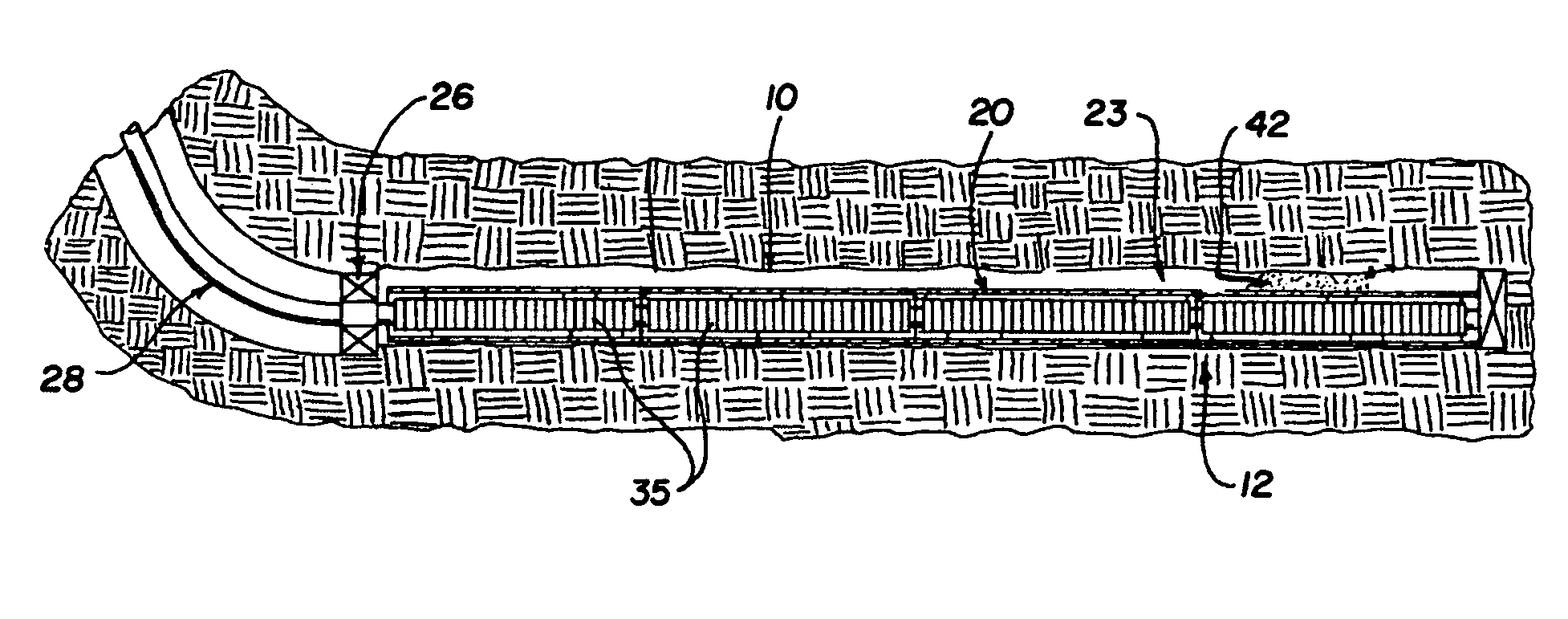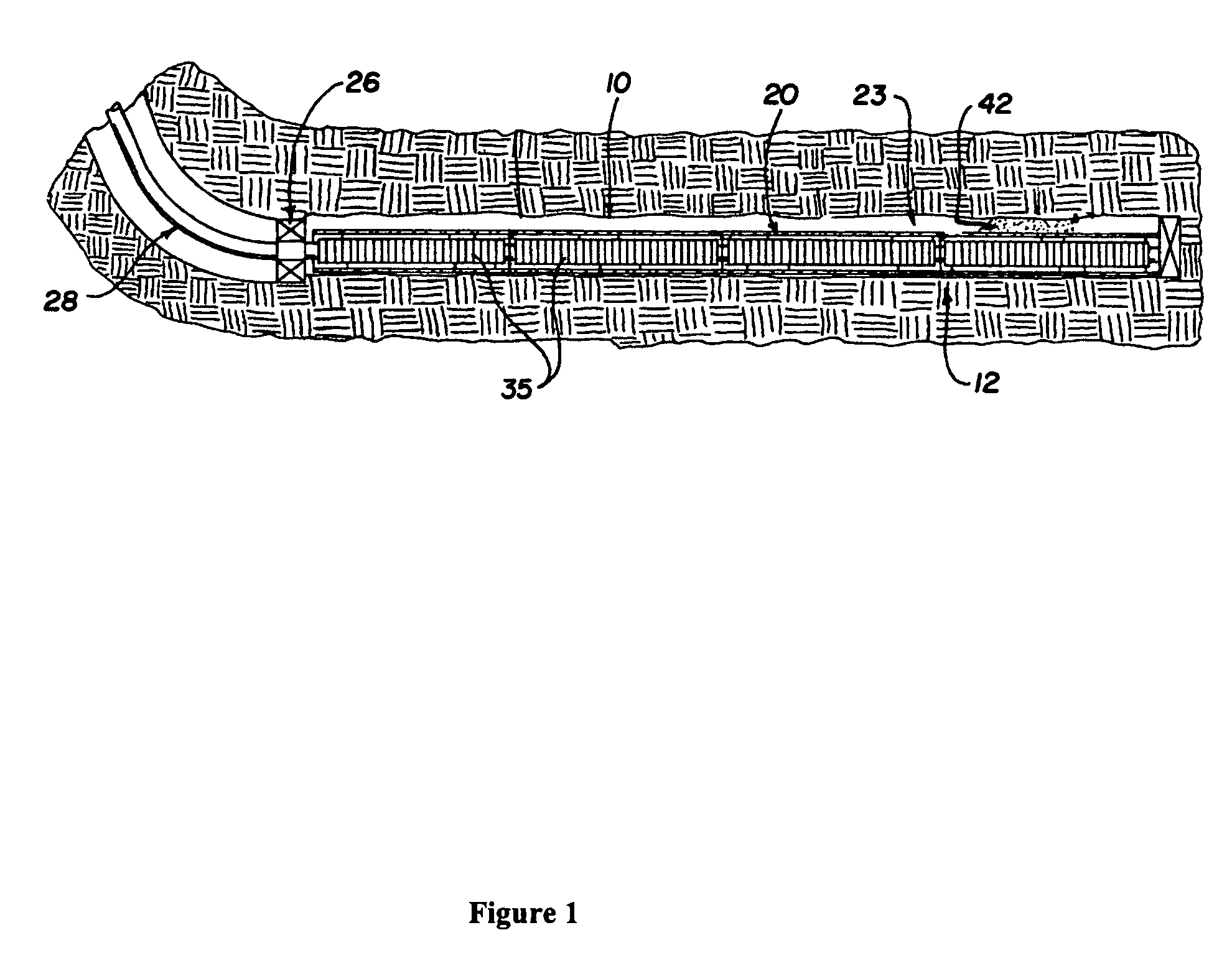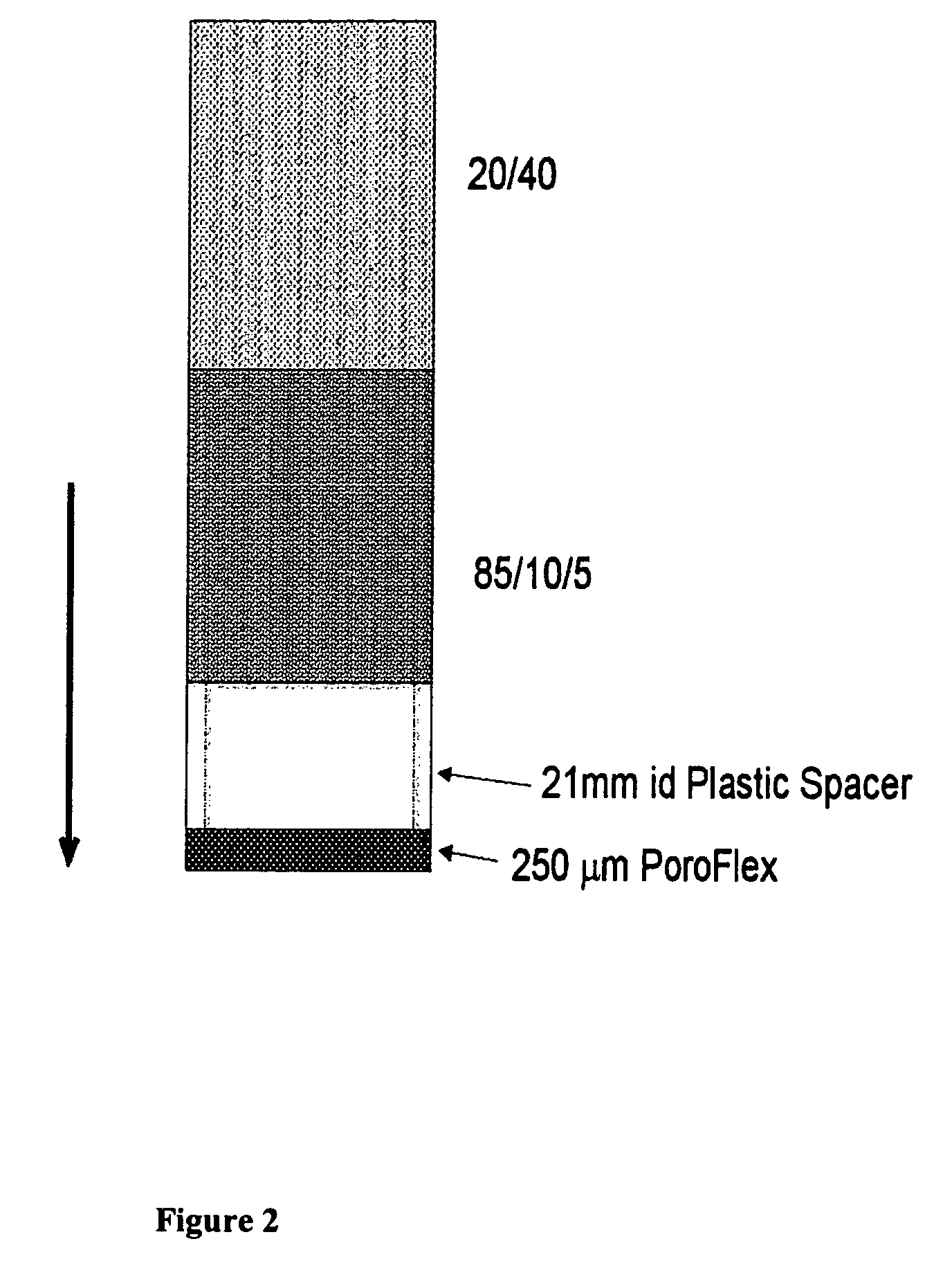Method of stabilizing unconsolidated formation for sand control
a technology of unconsolidated formation and sand control, which is applied in the direction of separation process, sealing/packing, and wellbore/well accessories. it can solve the problems of reducing the relative permeability of hydrocarbons and thus the hydrocarbon productivity of wells, reducing formation permeability, and reducing the productivity loss associated with condensate buildup
- Summary
- Abstract
- Description
- Claims
- Application Information
AI Technical Summary
Benefits of technology
Problems solved by technology
Method used
Image
Examples
example 1
[0067]Experiments were performed with simulated unconsolidated formation and a screen to determine if the methods of the present inventions will result in increased flow through a well screen filter. Sample test sleeves were used to test simulated well conditions. The sleeves were made of transparent material. The sleeves were assembled with well screens across one end to simulate well screens installed in unconsolidated sand formations. For the purposes of these examples, the screen was formed from sections of material used in the Halliburton PoroFlex brand commercial screens. An 85 / 10 / 5 synthetic sand (85% by weight of Oklahoma No. 1 sand, 10% by weight silica flour, and 5% by weight smectite) was packed in the sleeves, followed by 20 / 40 mesh sand. The sands were packed into individual flow cells. In one test setup, a gap was provided behind the PoroFlex (screen piece), for example with a plastic spacer, simulating incomplete compliance of the screen with respect to the formation ...
example 2
[0072]Testing was repeated for both treated and untreated formation sand, except the screen piece was placed tightly against the formation sand simulating complete compliance. Similar results were obtained.
example 3
[0073]In a separate tests using the same set up as described above, fresh distilled water (“DI”) water was injected through treated and untreated samples of formation sand spaced apart from the screen to represent a lack of conformity of the screen to the formation sand. FIG. 4 shows that at flow rate of 5 mL / minute, the pressure drop across the untreated formation sand increased significantly higher than pressure drop across the treated formation sand, which remained low and flat. The flow of DI water through the untreated sand pack was stopped after 15 minutes of flow time. See FIG. 4, “untreated” and “treated” graphed lines showing pressure drop (in pounds per square inch) vs. time (in seconds). This indicated that without the treatment of ultra-thin curable resin, the clay swelled and choked off the permeability. Coating of a thin film as a result of resin treatment helped encapsulate the clay particulates and prevented them from swelling.
PUM
| Property | Measurement | Unit |
|---|---|---|
| angle | aaaaa | aaaaa |
| cure temperature | aaaaa | aaaaa |
| temperatures | aaaaa | aaaaa |
Abstract
Description
Claims
Application Information
 Login to View More
Login to View More - R&D
- Intellectual Property
- Life Sciences
- Materials
- Tech Scout
- Unparalleled Data Quality
- Higher Quality Content
- 60% Fewer Hallucinations
Browse by: Latest US Patents, China's latest patents, Technical Efficacy Thesaurus, Application Domain, Technology Topic, Popular Technical Reports.
© 2025 PatSnap. All rights reserved.Legal|Privacy policy|Modern Slavery Act Transparency Statement|Sitemap|About US| Contact US: help@patsnap.com



